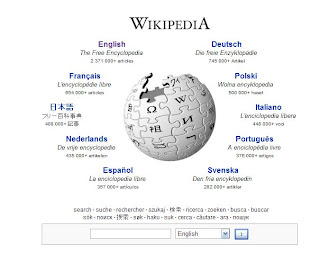
Communities have always collaborated knowledge in order to gain and improve collective intelligence. However, with new media technologies, and the support of content management systems, online communities may come together with information and contribute effectively towards collective intelligence. As Jenkins (2008) states, ‘none of us know everything; each of us knows something and if we put the pieces together, we can pool resources and combine our skills’. A medium that successfully allows this is the internet, and through content management systems such as Wikipedia, this is achieved.
Wikipedia is a user-led, collaborative form of knowledge management. ‘Wikipedia’s articles have been written collaboratively by volunteers around the world, and nearly all of its articles can be edited by anyone with access to the Internet’ (Wikipedia, 2008). This form of collaborative online community is one that exists simply to share knowledge and is the productive aspect towards collective intelligence.
This layering upon layering of information allows for ongoing discussion and subject areas that may not have previously received much information to be studied further in depth. This allows for all topics that the audience may be interested in to be explored, creating a much more democratic environment. One in which all users may participate and receive the information they desire from.
Through DIY communities such as Wikipedia, broader and more in-depth, diverse coverage is able to be achieved than traditional mediums. This is the beauty of collaborative online communities.
References:
Jenkins, H. 2006. Introduction: Worship at the Altar of Convergence. In Jenkins, H. Convergence Culture: When new and old media collide. New York: New York University.
Wikipedia. 2008. Wikimedia Foundation. www.wikipedia.com (accessed April 30, 2008).

No comments:
Post a Comment